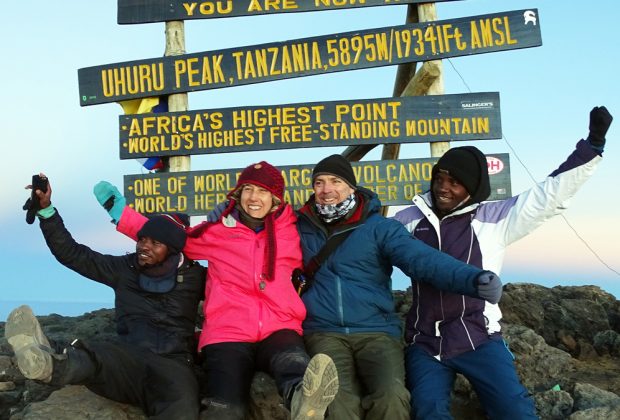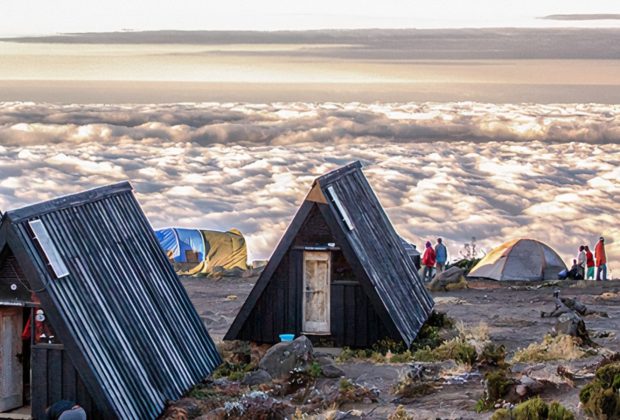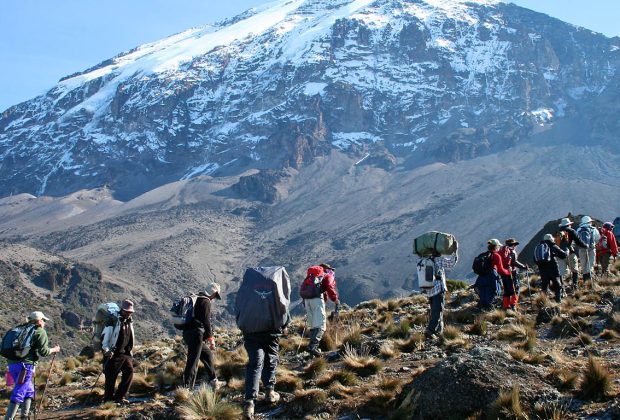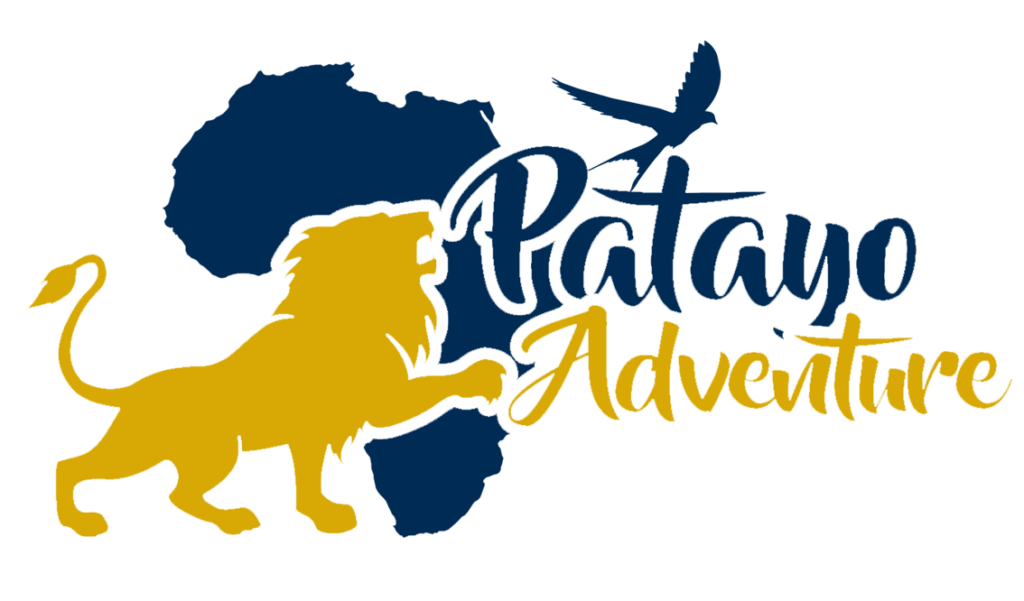6-Day Kilimanjaro Treks Via Lemosho Route + 2 Nights Hotel Stay
Tour Overview
The Lemosho route on Mount Kilimanjaro offers stunning views, good acclimatization, and less crowding. It starts with a drive to Londorossi Gate, then through Shira Plateau. The gradual climb and various program lengths make it suitable for different climbers. Starting at a higher altitude helps with acclimatization. Overall, it’s a great option for reaching the summit of Africa’s highest peak.



Day 00 | Arrival:
Arrive at Kilimanjaro International Airport (JRO) where you’ll be met by a representative from Kiliholidays and transferred to the hotel. The hotel offers all necessary amenities for a comfortable stay including cozy rooms, hot water, friendly staff, a swimming pool, and internet access. In the evening, there will be a briefing conducted by our managers to ensure you’re prepared for the climb.
Note: Check-in begins at 1:00 PM.
Day 1 | High-Altitude Drop Off Destination And Trekking To Shira 2 Camp:
Meet your guide and mountain support crew at the hotel in the morning for a briefing. Then, travel by vehicle (approximately 3–4 hours) to Kilimanjaro National Park’s western entrance: Londorossi Gate (2,200 m). After acquiring climbing permits and registering with the search and rescue service, continue upwards by off-road vehicles to the drop-off point (reaching 3,500 meters). Enjoy stunning views of the Shira Plateau. The trek to Shira 2 Camp features moderate altitude gain and provides an opportunity for acclimatization. Upon arrival, our professional mountain crew will set up camp and prepare dinner.
This is your first day at this altitude, so it’s strongly recommended to follow these instructions:
- Avoid alcohol and caffeine.
- Drink over 4 liters of bottled water daily.
- Consider taking a Diamox pill to alleviate symptoms of altitude sickness. Consult your doctor prior to the trip.
At night, pay attention to symptoms of altitude sickness such as headache or nausea.
- Elevation: 3,500 m to 3,900 m
- Hiking Time: 5-6 hours
- Distance: 11 km
- Difficulty: Low
Habitat: Meadows
Day 2 | Trekking From Shira 2 Camp To The Lava Tower and Descent To Barranco Camp:
After breakfast, depart Shira 2 Camp (3,900 m) and trek to the Lava Tower (4,630 m). This section of the route involves ascents and descents, culminating in a camp at over 4,600 meters. Spend 1–2 hours here for acclimatization and lunch. Descend to Barranco Camp (3,960 m), where you’ll see the famous Barranco Wall, an impressive feature of the landscape.
Note: If necessary, the route may be adjusted to accommodate participants feeling unwell.
- Elevation Change: 3,900 m to 4,630 m, 4,630 m to 3,960 m
- Hiking Time: 6-8 hours
- Distance: 12 km
- Difficulty: Medium
Day 3 | Trekking from Barranco Camp to Karanga Camp:
Wake up early for breakfast and ascend Barranco Wall. Then, embark on a challenging hike to Karanga Camp (4,035 m) with our expert guides pacing the group. After reaching the camp, enjoy a warm lunch. Later, complete an acclimatization hike towards Barafu Camp with a descent back to Karanga Camp.
Acclimatization hike: Change in Elevation: Karanga Camp (4,035 m) to en route to Barafu Camp (4,270 m), Hiking Distance: 2.5 km, Hiking Time: 1–2 hours
- Elevation: 3,960 m to 4,035 m
- Hiking Time: 4-5 hours
- Distance: 5 km
- Difficulty: Medium
- Habitat: Moorland
Day 4 | Trekking from Karanga Camp to Barafu Camp:
Begin the day by trekking to Barafu Summit Camp (4,640 m), the starting point for the summit push. After setting up camp, including tents and sleeping bags, take an acclimatization hike towards Kosovo Camp (4,800 m) and back to Barafu Camp. Rest and prepare for the night summit.
- Acclimatization hike: Change in Elevation: Barafu Camp (4,640 m) to Kosovo Camp (4,800 m), Hiking Distance: 2 km, Hiking Time: 1–2 hours
- Elevation: 4,035 m to 4,640 m
- Hiking Time: 4-5 hours
- Distance: 6 km
- Difficulty: Medium
- Habitat: Alpine desert
Day 5 | Ascent to Uhuru Peak and Descent to Millennium Camp:
Depart Barafu Camp (4,640 m) at night for the summit push to Uhuru Peak (5,895 m). The climb is technically simple but altitude poses a challenge. Each pair of climbers will have a personal guide. After reaching the summit, descend to Millennium Camp (3,820 m) with caution.
- Elevation Change: 4,640 m to 5,895 m, 5,895 m to 3,820 m
- Hiking Time: 8-12 hours
- Distance: 15 km
- Difficulty: High
- Habitat: Arctic
Day 6 | Descent from Millennium Camp to Mweka Gate:
After breakfast, descend from Millennium Camp through the tropical rainforest to Mweka Gate (1,640 m). Celebrate your achievement with the group before sharing your experience in the guestbook and receiving commemorative certificates. Transfer back to the hotel for rest.
- Elevation: 3,820 m to 1,640 m
- Hiking Time: 4-5 hours
- Distance: 12 km
- Difficulty: Low
- Habitat: Rainforest
Day 00 | Departure:
Rest at the hotel and transfer to the airport.
Note: Hotel check-out is at 11:00 AM. Late check-out is available for an additional fee if needed.
Inclusions:
- Accommodation: Lodging at Weru Weru River Lodge or similar.
- Meals: Breakfast, lunch, and dinner provided during the trek.
- Transportation: Transfer from Kilimanjaro International Airport to the lodge.
- Trekking Support: Experienced guide and mountain support crew.
- Climbing Permits: Acquisition of necessary permits for Kilimanjaro National Park.
- Equipment: Tents, sleeping bags, and other necessary camping gear.
- Activities: Trekking from Marangu Gate to Mandara Hut, Mandara Hut to Horombo Hut, Horombo Hut to Kibo Hut, and summiting Uhuru Peak.
- Briefings: Orientation and briefing sessions conducted by tour managers.
- Safety Measures: Registration with search and rescue service, as well as guidance on altitude sickness prevention.
- Certificates: Commemorative certificates upon successful completion of the trek.
Exclusions:
- International Flights: Airfare to and from Kilimanjaro International Airport.
- Travel Insurance: Personal travel insurance covering medical expenses, trip cancellations, and emergencies.
- Personal Expenses: Expenses for additional meals, beverages, souvenirs, and optional activities.
- Gratuities: Tips for guides, porters, and other staff members.
- Accommodation Beyond Itinerary: Any additional lodging required before or after the scheduled trekking dates.
- Airport Transfers: Transfers to the airport upon departure beyond the designated schedule.
- Visa Fees: Fees associated with obtaining entry visas for Tanzania, if applicable.
- Medical Expenses: Costs incurred for medical treatment or medications during the trek.
- Optional Activities: Any additional excursions or activities not specified in the itinerary.
What is Mount Kilimanjaro?
- Mount Kilimanjaro is the highest peak in Africa, located in Tanzania. It is a dormant volcano and one of the most iconic mountains in the world.
How tall is Mount Kilimanjaro?
- The summit of Mount Kilimanjaro, called Uhuru Peak, stands at an elevation of 5,895 meters (19,341 feet) above sea level.
How long does it take to climb Mount Kilimanjaro?
- The duration of a Kilimanjaro climb varies depending on the route chosen. Most climbs typically range from 5 to 9 days.
What are the different routes up Mount Kilimanjaro?
- There are several routes to the summit of Kilimanjaro, each with its own characteristics and scenery. Popular routes include the Marangu, Machame, Lemosho, Rongai, and Northern Circuit routes.
Is climbing Mount Kilimanjaro difficult?
- Climbing Kilimanjaro is challenging due to its high altitude, but it doesn’t require technical climbing skills. However, climbers should be physically fit and prepared for the rigors of high-altitude trekking.
Do I need a guide to climb Mount Kilimanjaro?
- Yes, it is mandatory to have a registered guide accompany you on your Kilimanjaro climb. Guides are essential for safety, navigation, and providing support throughout the trek.
When is the best time to climb Mount Kilimanjaro?
- The best times for climbing Kilimanjaro are during the dry seasons, which are typically from late June to October and from December to March. These months offer clearer skies and better trekking conditions.
What should I pack for climbing Mount Kilimanjaro?
- Essential items for climbing Kilimanjaro include proper clothing for varying temperatures, sturdy hiking boots, a good quality sleeping bag, trekking poles, personal medications, and other necessary gear as recommended by your tour operator.
What are the risks of climbing Mount Kilimanjaro?
- The main risks of climbing Kilimanjaro include altitude sickness, which can affect anyone regardless of fitness level, as well as other potential hazards such as extreme weather conditions and physical exhaustion.
Do I need to train before climbing Mount Kilimanjaro?
- Yes, it is highly recommended to undergo physical training and preparation before attempting to climb Kilimanjaro. This can include cardiovascular exercises, strength training, and hiking to build endurance and fitness levels.
